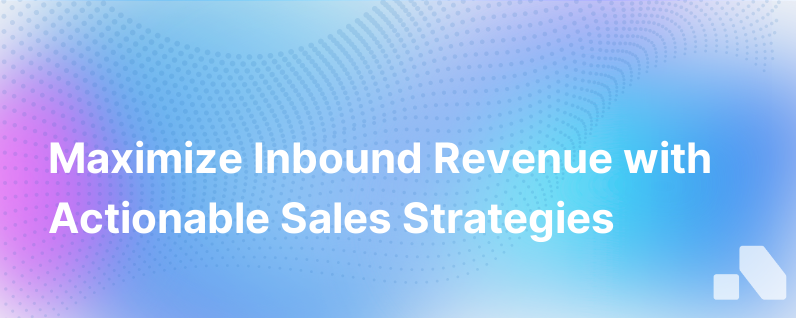Inbound Revenue
Published on November 17, 2023 by David Zhang
For a long time, the game of sales and marketing was largely outbound. Companies reached out to prospective customers by launching mass media advertising campaigns or organizing high-intensity sales phone campaigns. While this kind of outbound prospecting still occurs, today's sales organizations increasingly focus on generating inbound revenue.
In this article, we will dig into the tactics, techniques, and strategies that can help organizations increase inbound revenue. Before that, let's understand what inbound revenue is and why it matters.
What is Inbound Revenue?
In the realm of sales, inbound revenue refers to the income derived from customers who approach your company through their own accord instead of being sought out through outbound avenues like direct mail or cold calling.
It's the dream of every business - customers that come to you, ready to buy, love your product, and become a source of referrals and repeat business. But generating inbound revenue isn't an accident. It requires planning, strategy, and consistent execution.
Why Focus on Inbound Revenue?
Focusing on inbound revenue can provide several benefits for B2B and B2C companies alike:
- It's cost-effective. Typically, the cost of acquiring a customer through inbound channels is significantly less than outbound approach.
- Customers are better qualified. Inbound leads usually do their homework before reaching out.
- It can scale. Inbound channels can be scaled up or down more easily based on the business' needs.
Driving Inbound Revenue: Strategies and Tactics
Increasing inbound revenue requires a multi-pronged approach, focusing on various aspects such as content marketing, SEO, and customer experience.
1. Content Marketing
The key to content marketing is to produce high-quality, engaging content that resonates with your target audience. This content should do more than just selling; it should be useful, educating prospects about your products, industry trends, best practices, etc. The more useful your content, the more people will share it, further expanding your reach.
2. Search Engine Optimization (SEO)
In today’s digital world, most buying cycles begin with a search engine query. SEO can be a potent tool in your inbound marketing arsenal. Optimizing your website content for search engines can significantly increase the likelihood of potential customers discovering your business. Keywords, backlinks, and SEO-friendly site structures all play a pivotal role in this.
3. Social Media Marketing
Social media has emerged as an effective channel for driving inbound revenue. Brands can leverage social media platforms like LinkedIn, Facebook, Instagram to deliver targeted messages, interact with followers, and develop a strong brand persona.
4. Email Marketing
An effective email marketing campaign can attract leads and stay on the top of your prospects' minds. Personalized emails, newsletters and drip campaigns can help engage and nurture leads until they are ready to buy.
5. Customer Experience
Often overlooked, improving the customer experience can do wonders for your inbound revenue. Efficient and user-friendly website and mobile app design, timely customer support, and personalization can all enhance the customer journey, converting casual visitors into paying customers.
Leverage AI in Your Inbound Strategy
While these strategies are often labor-intensive and require expertise and time, tools like Aomni can streamline the process.
Aomni, an AI-powered platform for B2B sales, helps businesses leverage data, conduct real-time account research, gain competitive insights, and curate personalized marketing content. Its comprehensive toolset assists companies in driving inbound revenue, providing personalized, AI-powered insights in just 15 minutes.
Conclusion
In today's dynamic market, focusing on inbound revenue is a critical strategy for sustainable business growth. By leveraging content marketing, SEO, social media marketing, email marketing, and providing an impressive customer experience, businesses can attract potential customers, generate quality leads and improve sales performance.
Using AI technologies like Aomni can provide an edge, helping businesses target prospects effectively, personalize their communication, and convert more leads into customers faster and more efficiently.